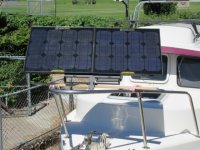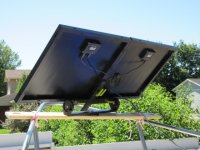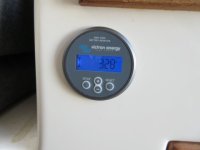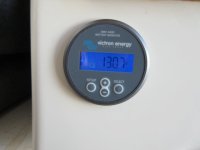Sunbeam
Active member
- Joined
- Feb 23, 2012
- Messages
- 3,990
- Reaction score
- 0
- C Dory Year
- 2002
- C Dory Model
- 22 Cruiser
ssobol":sibqsq0b said:I would prefer two 50 watt panels instead of one big 100W panel (i.e. if the 100W was split lengthwise). I think that this would be easier to install on the CD22 given the lack of large open spaces. I would put one panel on each side of the center roof bump (outside the rails).
Solarland's SLP 070 (formerly 065) is long and narrow (~13" x 58"). That said, I considered/measured with the idea of placing them where you say on the 22 and still felt it would be rather big/awkward for going forward. I think that instead I'll put panel(s) on the center of the roof. Yes, if I put a kayak up there they will be shaded, but I figure that would mostly be underway, when I have the engine alternator going - or at short term anchorages where I have enough power left over. For longer anchoring times I'd likely have the dinghy (kayak) down and so the panels would not be shaded. Granted all the locations are going to have their plusses and minusses. Another thought I had was a hard topped bimini with panels above, but, I think I like the option of folding the bimini...





